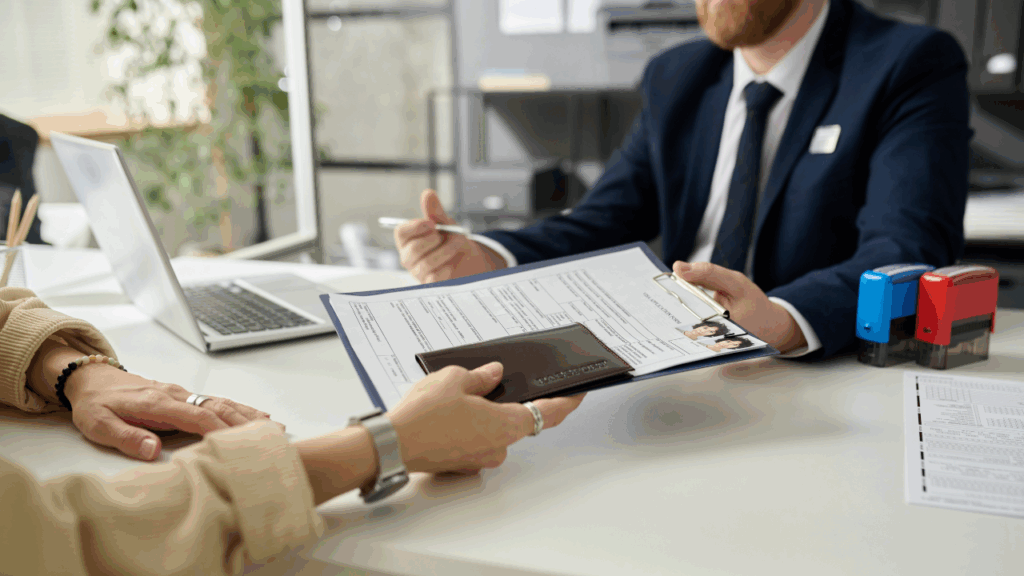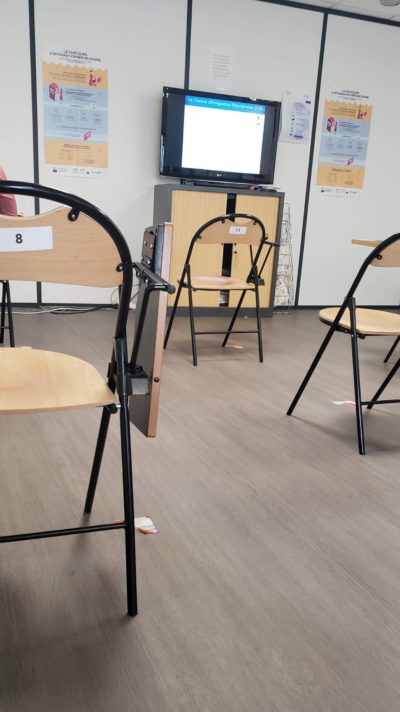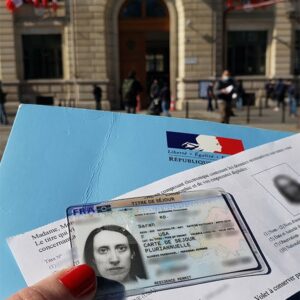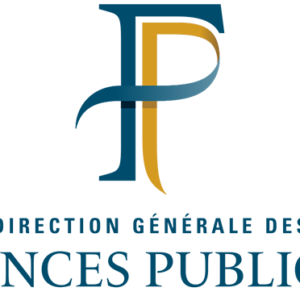Applying for an American Passport for a Baby in France

When my daughter was born, she became a dual national right from the start. Just a few months earlier, I had finalized my French nationality and applied for my French passport and ID card. So, naturally, the next administrative step was applying for an American passport for a baby in France. Compared to some of the other paperwork hurdles expat parents face, this process turned out to be refreshingly straightforward.
In this post, we’ll walk through everything I learned about applying for a U.S. passport for a baby born abroad, from understanding the basics, to applying for the Consular Report of Birth Abroad (CRBA), and finally securing the passport itself. Whether you’re a fellow American living in France or elsewhere, I hope this guide makes the process smoother and a little less daunting for your family.
Table of Contents
Understanding the Basics
Getting a U.S. passport for a baby born abroad is slightly different than applying for an adult passport in the United States. Essentially, you’re establishing your child’s U.S. citizenship and obtaining the official travel document that allows them to enter the country and there’s a few more (but of course!) steps and paperwork required for this process. Here are some key basic points to keep in mind throughout this administrative step: (we’ll touch on each of these points within this article, don’t worry.)
Citizenship First: Before applying for a passport, you will need to confirm that your child is a U.S. citizen. Most children born abroad to at least one American parent are automatically U.S. citizens, but the exact requirements depend on your residency history and the circumstances of your child’s birth. This is done through the Consular Report of Birth Abroad.
In-Person Application Required: Unlike adult renewals, babies cannot apply by mail. Both parents (or legal guardians) must appear in person with the child to submit the passport application.
Supporting Documents: You’ll need several official documents, including proof of your child’s birth abroad, proof of your own U.S. citizenship, and evidence of parental relationship as well as proof of time lived in the United States.
Processing Time: International applications can take longer than domestic ones, so it’s important to plan ahead if you anticipate travel. There can also be long delays in available appointments. Make sure you leave plenty of wiggle room when making the application.
Step-by-Step Application Process
The process to apply for the American passport for a baby abroad is straightforward and simple. You will need to provide information on the child’s birth, the proof of citizenship of the parent(s), application and photos of the baby. The embassy provides detailed instructions and a passport wizard to guide you through the application process. Both parents and the child must appear in person at the embassy to submit the application.
You also have the option to apply for the Consular Report of Birth Abroad (CRBA) at the same time as the passport. The Consular Report of Birth Abroad (CRBA) is basically your child’s American birth certificate. It proves that your baby is a U.S. citizen from birth, even though they were born outside the United States, as long as the American parent(s) meets the requirements to pass on citizenship.
When applying for your baby’s U.S. passport from France, it’s important to plan ahead. Both the CRBA and the passport application require in-person appointments at the U.S. Embassy in Paris, so be sure to book early as slots can fill up pretty quickly. Make sure you have all the necessary documents on hand, including proof of your child’s birth, evidence of your U.S. citizenship, and valid IDs for both parents. Processing times can vary, so it’s best to start the process well in advance of any travel plans.
For the CRBA, you will begin the application process online via the eCRBA and finish up the application in-person at the US Embassy/Consulate nearest you in France. To start this process, you will need a MyTravelGov account that will allow you to start the application. You’ll need to make sure you have all the proper documentation.
For the Passport, you will also need to begin the application online via the U.S. Department of State online portal. You will also go here to check the status of your passport application as well as report any lost or stolen passports.
As of August 15, 2025, the online portal is undergoing updates and is unavailable. You can use their form finder or print directly the DS-11 to fill out by hand. (will update when upgrade complete).
When you are ready to book your appointment, make sure you do so for at least a minimum of 3 days after making the payment to allow it enough time to process. When I applied at the end of November, the next available appointment was a month out.
- To book your appointment for Paris.
- To book your appointment for Marseille (available only for applicants located in PACA, Occitanie, Monaco and Corsica).
- To book your appointment for Strasbourg.
You will need a self-addressed, Colissimo “pret-a-envoyer” envelope for passport return, with capacity for 500g for each applicant. Do not forget to write down the tracking number or take a photo of it. This will be used to send your passport and CRBA back to you when they are printed and ready.
Gather Required Documents
As with any administrative task, there is a list of paperwork that goes along with the process. The documents needed for the first time application of a passport for a baby can be found on the Embassy website. It does say renewal on the US Embassy website for France, but these are the documents you will need for a first time application.
If you ever have any doubts about anything, you can reach out here: passportsparis@state.gov
| Document | CRBA | Passport | Notes |
|---|---|---|---|
| Child’s foreign birth certificate | ✅ | ✅ | Must list both parents’ names. Used to prove birth and parentage. |
| Consular Report of Birth Abroad (CRBA) | ❌ | ✅ (if already approved) | If applying at the same appointment, CRBA is processed/issued first, then passport. |
| Parents’ passports/IDs | ✅ | ✅ | Both parents must show valid ID (U.S. or foreign passport, driver’s license). |
| Proof of U.S. citizenship (parent) | ✅ | ✅ | U.S. passport, birth certificate, or naturalization certificate. |
| Proof of physical presence in the U.S. (parent) | ✅ | ❌ | School records, tax returns, pay stubs, leases, etc. Not required for passport once citizenship is established. Find full list here. |
| Evidence of parental relationship | ✅ | ✅ | Usually the birth certificate itself suffices. |
| DS-2029 (CRBA application form) | ✅ | ❌ | Completed but unsigned until the appointment. Can fill out application online. |
| DS-11 (passport application form) | ❌ | ✅ | Completed but unsigned until the appointment. Can fill out application online. |
| DS-3053 (parental consent, if one parent absent) | ✅ (if needed) | ✅ (if needed) | Required if one parent cannot attend the appointment. Must be notarized. |
| Baby’s passport photo | ❌ | ✅ | One photo, 2×2 inches, white background. Follow American standards. |
| Payment for fees | ✅ | ✅ | Separate fees for CRBA and passport; both payable at the appointment. |
| Photocopies of all documents | ✅ | ✅ | Embassy often keeps copies, so bring duplicates. |
Proof of U.S. Citizenship
In order to pass along U.S. citizenship, certain requirements must be met by one or both parents, which are as follows:
- At least one parent having the nationality of the United States at the time of the child’s birth.
- The existence of a blood relationship between the child and U.S. citizen parent(s).
- Documentary evidence demonstrating the U.S. citizen parent(s)’ physical presence in the United States prior to the child’s birth.
In order to prove this, you will need to provide specific documentation. The following is a small example of the documents you can provide for proof of citizenship:
- Wage and tax statements (W-2)
- Rental leases
- Official academic transcripts
- Vaccination or other medical records
- Property tax records
- Utility bills
- Employment records
You can find the full list as well as physical presence requirements on the US Embassy and Consulate’s website. You will be asked to upload these during the online application process. I did not print out some of the documents (W-2s mainly) as I had other physical documents that would suffice proof. I was not asked to provide the physical copies when at the Embassy for our interview.
What to Expect at the Embassy Appointment
The embassy appointment can feel intimidating, but knowing the flow of the day makes it much easier. If you can, book an early appointment, there may be less wait time. This was our experience when we had our appointment. Our total time for an appointment at 8:30 AM took an hour, start to finish. Friends that booked later in the morning/early afternoon waited upwards of 3-4 hours.
Here’s a step-by-step look at what usually happens when you’re applying for both the CRBA and your baby’s passport at the same time in Paris:
Arrival & Security Check: Arrive at least 15 minutes early. You’ll go through airport-style security (bags scanned, phones sometimes limited), so keep documents organized in a small folder for easy access. At the Embassy in Paris (if you have not already been) you will go through 2 security checkpoints. The first one is a brief check where the agents will ask you what you are there for and do a first pat down and bags will be opened. The second check is through a metal detector and bags through the x-ray machine. Since we had our daughter with us, I carried her and did not go through the metal detector, but they used the wand instead. You will hand over any electronic devices, cell phones included, that will be kept at security and be handed over when you are done. You will then get a badge that you will need to keep with you during your time inside the Embassy. We had the stroller and unfortunately the lift did not work so we had to carry the stroller up the stairs.
Check-In: At the entrance, you’ll confirm your appointment and be directed to the American Citizen Services (ACS) section where you’ll check in on a machine and take a number. There are greeters that are there and can help direct you to which specific section to go to. You’ll be seated in a waiting area in front of several windows and will be called accordingly.
Document Submission: You’ll hand over your application forms (CRBA and DS-11 for the passport), along with all supporting documents (birth certificate, passports, proof of U.S. citizenship, proof of U.S. physical presence, etc.). The staff will review everything carefully. If something is missing, they’ll let you know, but ideally you’ve come prepared. We were called to a window where they went through the application document by document and asked questions along the way. Our agent was training someone as there were 2 of them working on the computer. Once they had all the information in the system, they asked Thomas and I to verify all the information on the screen. Once that was done, we were told to wait in front of a specific window to finish the CRBA process.
Oath & Interview: Both parents will be asked to raise their right hands and swear that all the information and documents provided are true. A consular officer may ask a few straightforward questions about your child’s birth, your relationship, and your time living in the U.S. The second agent called our family name and we both went to the window. Here, the agent verified again our information and asked a few personal questions on our life abroad. She asked us to raise our hands and swear that all the information we gave was correct and then she handed us an American flag and congratulated our daughter on her official American citizenship.
Payment: You’ll pay the fees for both the CRBA and the passport. If you paid online, you’ll provide proof of payment. I had paid for both the CRBA and the passport before our appointment and showed proof of payment both times when asked.
Final Review: The officer will confirm next steps and give you a receipt with instructions on how your documents will be returned. This was done at the first window for us. The agent asked if we had noted down the tracking number, I said no and he gave back the envelope so I could write it down. I forgot I bought the envelope with my La Poste account so the number was actually already in there.
Processing & Delivery: If everything is in order, the CRBA is approved first. Once citizenship is established, the passport is issued. Both documents are typically mailed to you (or available for pickup) within a few weeks, though times can vary. I had receieved email notification on when they application was processed and when it was approved. I was also able to check online to see the status of the application and when it would be mailed out.
Pro tip: Bring snacks, a toy, or something soothing for your baby; waiting at the embassy can take a couple of hours. Also, make sure to have everything in duplicate if possible (copies of passports, birth certificates, etc.), as the embassy often requires copies to keep.
What Happens Next?
Applying for a Consular Report of Birth Abroad and your baby’s first U.S. passport in France can feel overwhelming at first, but once you understand the steps, it’s a very manageable process. By gathering your documents in advance, booking your appointment early, and preparing for the embassy visit, you’ll avoid most of the common stress points.
From establishing your child’s U.S. citizenship with the CRBA to receiving their passport in the mail, the process usually takes just a few weeks. Plan on 4-6 weeks in total from date of interview and submission of paperwork to receiving the final CRBA and passport. You will receive email updates in regards to your application as well as you can check the tracking number of the envelope to see where it is at in the process.
When you receive your envelope back with the CRBA certificate and passport back, verify that all the information is correct. If there are any issues, you will need to send it back to request a new one. We had to do this as the last name was misspelled. I called the Embassy and they told me to send in the passport and supporting paperwork. You will need to fill our the DS-5504 and send in a photo as well. Since this error was corrected within the first year of it being issued, there was no charge for reprinting.
Make sure you start the process well in advance of any travel plans. If you are unable to and if you have urgent travel plans, you can explain this at your appointment. While expedited service is limited outside the U.S., the embassy may be able to help in true emergencies (medical reasons, family crisis, etc.).


You May Also Like

OFII Convocation CIR
1 October 2020
Picking up my carte de séjour : remise de titre de séjour
14 May 2021